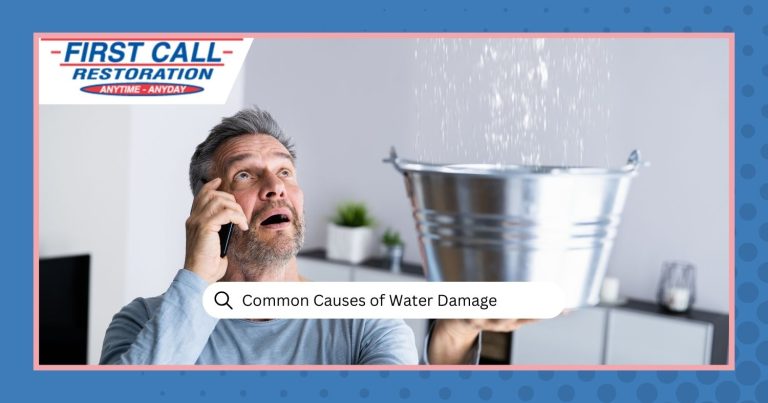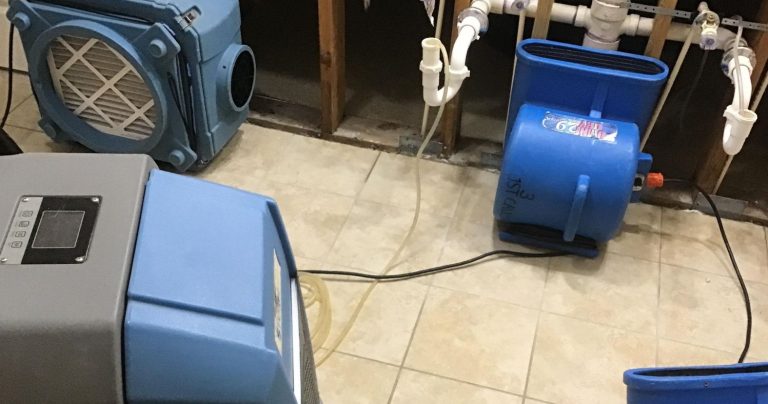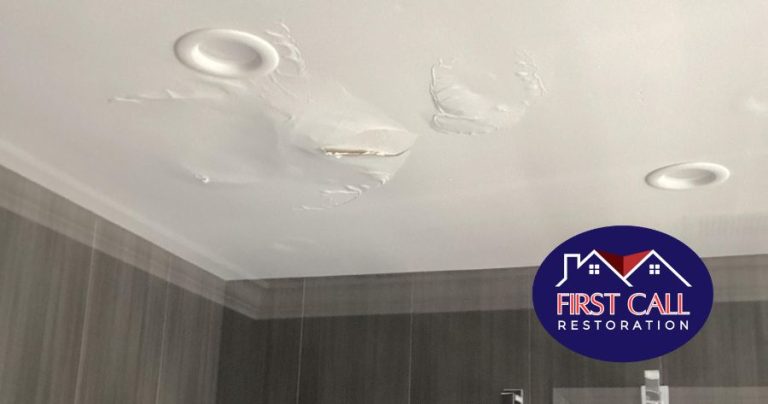Table of Contents
ToggleAfter water damage, drying everything properly is key for a quick recovery. It stops more damage and helps get things back to normal. Water damage restoration Hudson Valley experts emphasize the importance of using effective strategies, including the strategic use of fans, to speed up the drying process. In this blog post, we will walk you through the drying process, the factors influencing the drying time, signs of effective drying, and the importance of running fans for maintaining a healthy indoor environment.
Understanding the Drying Process
To understand the importance of running fans after water damage, it’s essential to grasp the principles underlying drying techniques. The drying process works by evaporating water, turning it from liquid to gas, and releasing it into the air.
Steps of the Professional Drying Process
The professional drying process involves several straightforward steps to ensure effective restoration of water-damaged areas:
- Assessment: Technicians assess the extent of the damage and identify affected surfaces.
- Water Extraction: Standing water and excess moisture are removed using specialized equipment.
- Moisture Detection: Technicians use tools to detect hidden moisture within materials and structures.
- Drying Equipment Setup: Air movers (fans) and dehumidifiers are strategically placed to encourage drying.
- Monitoring: Technicians monitor moisture levels and adjust equipment as needed for optimal drying.
- Completion: Final inspections verify thorough drying before restoration activities begin.
Factors Affecting Drying Time
Several factors influence drying time, including:
- The Extent of Water Damage: The severity and extent of water seepage directly impact drying time. Larger volumes of water need longer drying periods.
- Humidity Levels: Humid air slows down drying, while dry air speeds it up. It is important to keep the humidity levels between 30% and 50%.
- Airflow: Good airflow helps dry surfaces out by making water evaporate faster and moving damp air away from the damaged area.
- Temperature: Warmer temperatures generally lead to faster evaporation and drying compared to colder temperatures.
- Material Type: Different materials dry at different speeds. Materials like carpet and upholstery take longer to dry than hard materials like tile or metal.
How Long to Run Fans After Water Damage
Deciding how long to run fans after water damage depends on a few factors, as previously mentioned. As a general guideline, experts recommend running fans for at least 24 to 48 hours after the damage. However, if the damage is serious and humidity levels remain high, you might need to keep them running much longer. This means the drying process can last from several days to several weeks.
Signs of Effective Drying
Before turning off fans, make sure areas and materials are completely dry. Look for the obvious signs, dry surfaces, and no pooling water, which signals that drying is successful. If you have access to them, you can also use tools like moisture meters or infrared imaging to check moisture levels in materials.
Read About – How to Fix Water-damaged Kitchen Cabinets
Importance of Running Fans
Fans are key devices for drying out water damage quickly. They help by moving air around, which makes water evaporate faster from surfaces. This constant air movement is especially useful for drying areas that are hard to reach and stops pockets of damp air from building up.
Health Implications After Water Damage Incidents
Water damage incidents can lead to significant health risks, primarily due to mold growth and poor indoor air quality. Mold exposure can trigger allergic reactions, respiratory symptoms, and skin irritation, particularly in children and the elderly. Fast remediation and dehumidification are important to minimize these health risks and ensure a safe living or working environment.
Dehumidification plays a pivotal role in improving indoor air quality and preventing mold-related health issues. By removing excess moisture from the air, dehumidification stops mold growth and reduces humidity levels, while safeguarding occupant health. Using dehumidifiers during water damage cleanup is crucial for making sure your indoor space stays healthy. In fact, dehumidification improves health by creating a safer indoor environment with reduced risk of mold-related health issues.
Best Practices for Water Damage Recovery
Using best practices alongside running fans makes water damage recovery work better.
- Regular Moisture Monitoring: Keeping an eye on moisture levels is key during recovery. By regularly checking affected areas, you can track drying progress and make sure moisture is thoroughly removed. You can use tools like moisture meters or hygrometers to measure moisture in surfaces and the air. This helps you adjust drying strategies as needed and avoid problems from insufficient drying.
- Using Dehumidifiers: Dehumidifiers are key devices that help dry things faster by removing extra moisture from the air. Dehumidifiers work by pulling damp air into the unit, where it’s cooled and the water is collected. This lowers humidity, making the air drier and speeding up evaporation. When used with fans, dehumidifiers are even more effective at drying out, especially in humid areas.
- Using Professional Help: When water damage gets complicated, it’s best to call in professionals. They have the know-how, specialized gear, and tools to tackle tough situations. They’ll assess the damage, make a plan, and carry out thorough restoration work to limit further damage and restore affected areas. With their help, you can recover and reduce the chances of issues like mold, damage to structures, and health risks.
Understanding water damage repair costs can help homeowners prepare for the expenses involved in drying and restoration efforts. Costs depend on factors like the extent of the damage, affected materials, and the professional services required for restoration. Knowing what to expect allows for better planning during recovery.
Contact First Call Restoration LLC for Water Damage Concerns
Incorporating careful drying techniques, including strategic fan operation and dehumidification, is important for optimizing the recovery process after water damage. For professional water damage restoration services in the Hudson Valley area, contact First Call Restoration LLC today.Our team will be there in no time to help you get through the situation and make your space dry and safe again.




